Food safety is important for people living with diabetes. Diabetes can affect various organs and systems of the body, causing them not to function properly, and making a person more susceptible to infection and food illness.
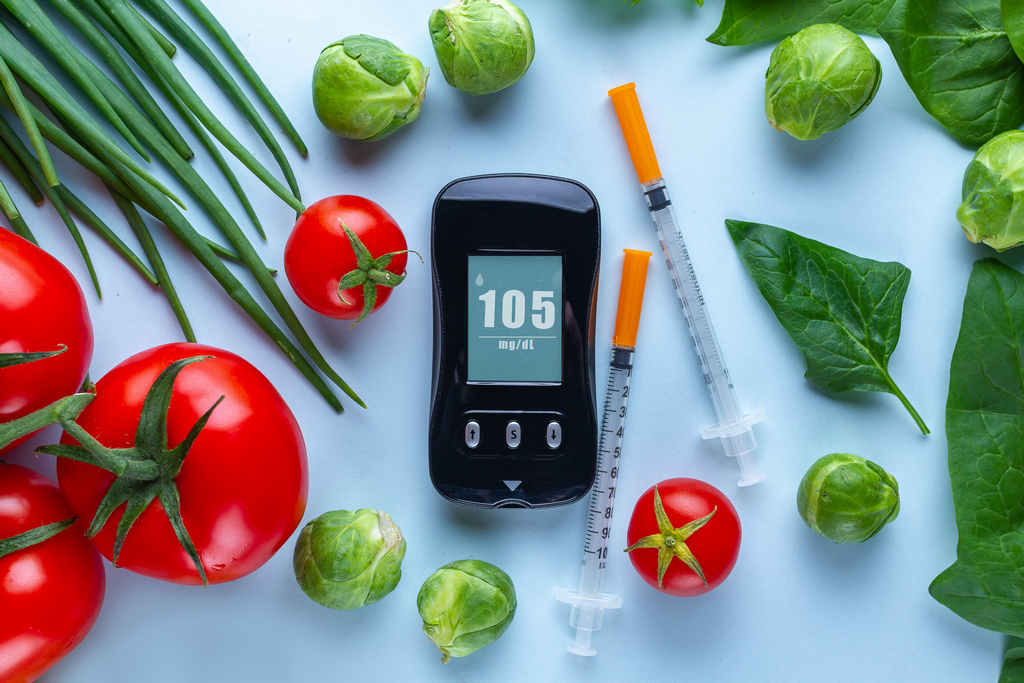


About Diabetes
Diabetes is one of the leading causes of disability and death in the United States. It can cause blindness, nerve damage, kidney disease, and other health problems if it’s not controlled.
- Learn about proper hygiene, cross contamination, cold and hot food safety, foodborne pathogens, and best practices to prevent foodborne illness.
- Food Manager Training & ANSI Certification - $99.00
- Food Handler Training - only $7.00!
- HACCP Training: 16hr/4hr/1hr
- Food Allergy Training - $15.00
- Enter Promo "train10off" at Checkout
One in 10 Americans have diabetes — that’s more than 30 million people. And another 84 million adults in the United States are at high risk of developing type 2 diabetes.
November is National Diabetes Month, a time when communities across the country team up to bring attention to diabetes and its impact on millions of Americans.
How Diabetes Affects the Body
Diabetes affects the body in various ways:
- Immune system – With diabetes, the immune system may not readily recognize harmful bacteria or other pathogens. These affects leave diabetes patients more prone to infectious disease, such as foodborne illness. A diabetic patient’s immune system may not immediately recognize harmful foodborne pathogens increasing a person’s risk for infection.
- Stomach and Intestinal Tract – Diabetes may damage the cells that create stomach acid and the nerves that help your stomach and intestinal tract move the food throughout the intestinal tract. Because of this damage, your stomach may hold on to the food and beverages you consume for a longer period of time, allowing harmful bacteria and other pathogens to grow.
- Kidneys – Diabetes may damage kidneys, which work to cleanse the body and may not be functioning properly and may hold on to harmful bacteria, toxins, and other pathogens.
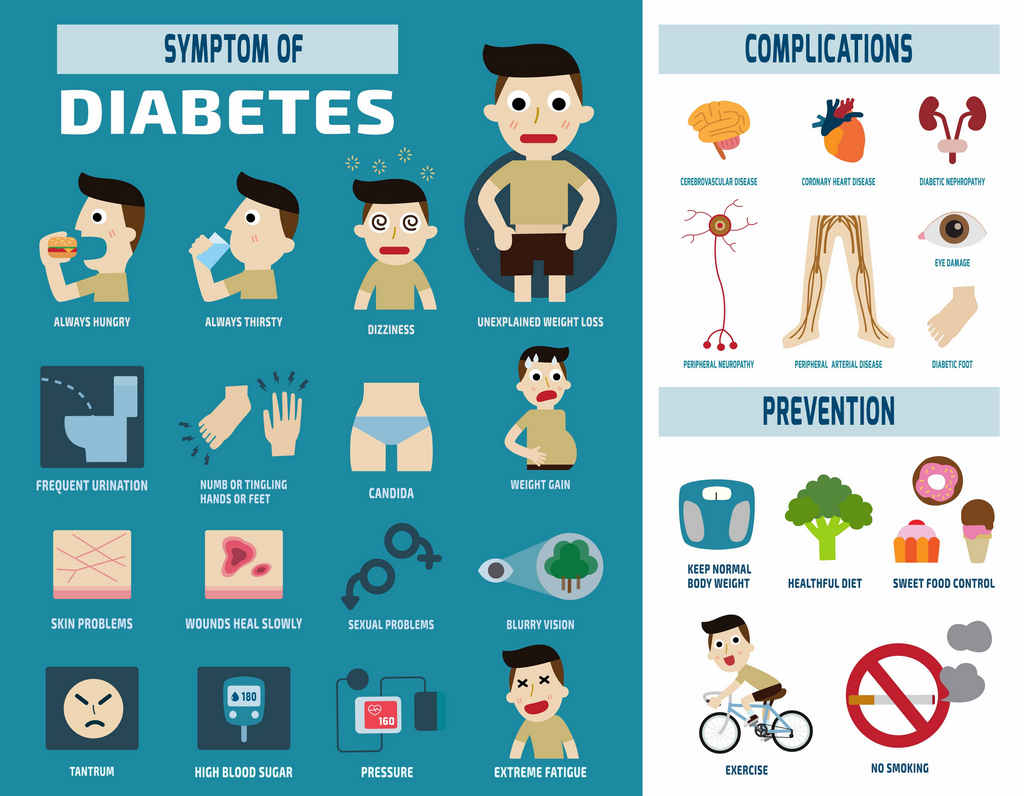


As a consequence, having diabetes may leave one more susceptible to developing infections and are more likely to have a lengthier illness, undergo hospitalization, or even die.
To avoid contracting a foodborne illness, people with diabetes must be vigilant when handling, preparing, and consuming foods.
Make Wise Food Choices
A healthy diabetes diet looks pretty much like a healthy diet for anyone: lots of fruits, veggies, healthy fats, and lean protein; less salt, sugar, and foods high in refined carbs (cookies, crackers, and soda, just to name a few). Your individual carb goal is based on your age, activity level, and any medicines you take.



However, some foods are more risky for people with diabetes than others. In general, the foods that are most likely to contain harmful bacteria or viruses fall in two categories:
- Uncooked fresh fruits and vegetables
- Some animal products, such as unpasteurized (raw) milk; soft cheeses made with raw milk; and raw or undercooked eggs, raw meat, raw poultry, raw fish, raw shellfish and their juices; luncheon meats and deli-type salads (without added preservatives) prepared on site in a deli-type establishment.
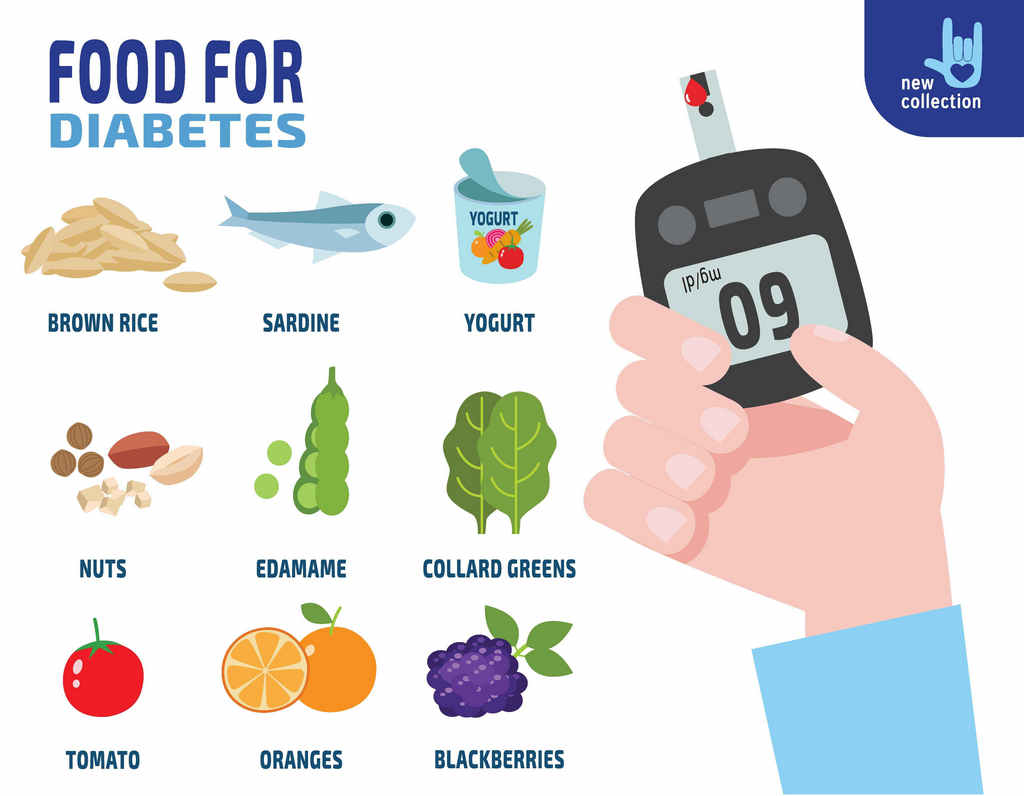


The risk these foods may also depend on the origin or source of the food and how the food is processed, stored, and prepared. Follow these guidelines (see chart below) for safe selection and preparation of your favorite foods.
Common Foods: Select the Lower Risk Options
| Type of Food | Higher Risk | Lower Risk |
|---|---|---|
| Meat and Poultry |
| Meat or poultry cooked to a safe minimum internal temperature:
|
| Tip: Use a food thermometer to check the internal temperature. | ||
| Seafood |
|
|
| Milk |
|
|
| Eggs | Foods that contain raw/undercooked eggs, such as:
| At home:
When eating out:
|
| *Tip: Most pre-made foods from grocery stores, such as Caesar dressing, pre-made cookie dough, or packaged eggnog are made with pasteurized eggs. | ||
| Sprouts |
|
|
| Vegetables |
|
|
| Cheese |
-Brie |
|
| Hot Dogs and Deli Meats |
|
|
| Tip: You need to reheat hot dogs, deli meats and luncheon meats before eating them because the bacteria, Listeria monocytogenes grows at refrigerated temperatures (40 ºF or below). This bacteria may cause severe illness, hospitalization, or even death. Reheating these foods until they are steaming hot destroys these dangerous bacteria and makes these foods safe for you to eat. | ||
| Pâtés |
|
|
Food Safety Steps
Learn about safety tips for those at increased risk of foodborne illness. Those living with diabetes should always follow the four food safety steps:
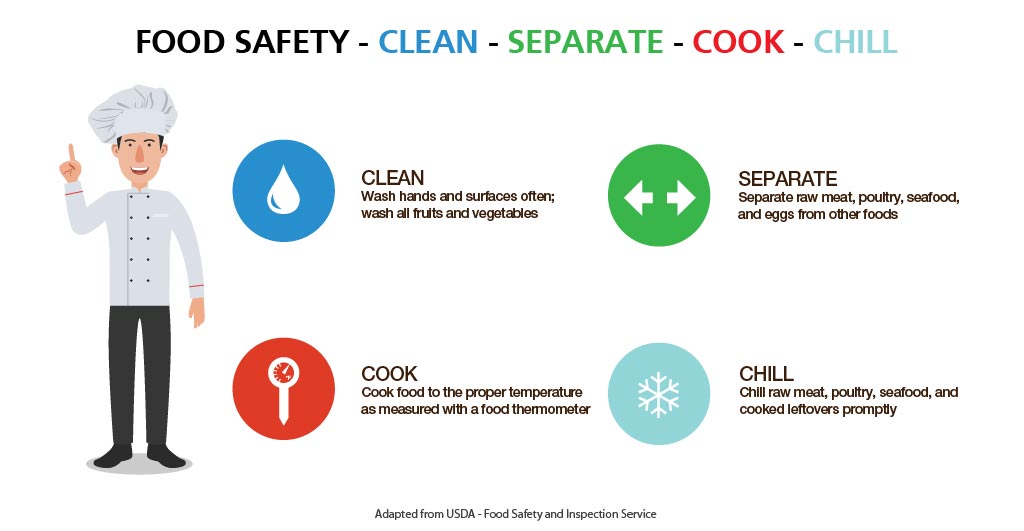


- Clean – Bacteria can spread throughout the kitchen and get onto cutting boards, utensils, counter tops, and food. To ensure that your hands and surfaces are clean.
- Separate – Cross-contamination occurs when bacteria are spread from one food product to another. To prevent cross-contamination, separate raw meat, poultry, seafood, and eggs from other foods in your grocery shopping cart, grocery bags, and in your refrigerator.
- Cook – Foods are safely cooked when they are heated to the USDA-FDA recommended safe minimum internal temperatures:
- Beef, Pork, Veal, Lamb, Steaks, Roasts & Chops: 145 ºF with 3-minute rest time
- Fish: 145 ºF
- Beef, Pork, Veal, Lamb Ground: 160 ºF
- Egg Dishes: 160 ºF
- Turkey, Chicken & Duck Whole, Pieces & Ground: 165 ºF
- Chill – Cold temperatures slow the growth of harmful bacteria. Keeping a constant refrigerator temperature of 40 °F or below is one of the most effective ways to reduce risk of foodborne illness. Use an appliance thermometer to be sure the refrigerator temperature is consistently 40 °F or below and the freezer temperature is 0 °F or below.
Summary
To avoid contracting a foodborne illness, people with diabetes must be vigilant when handling, preparing, and consuming foods.
Likewise, remember to manage your diabetes during the holidays and stay healthy while you celebrate.
USDA Pamphlet: Food Safety for People with Diabetes
A need-to-know guide for those who have been diagnosed with diabetes.
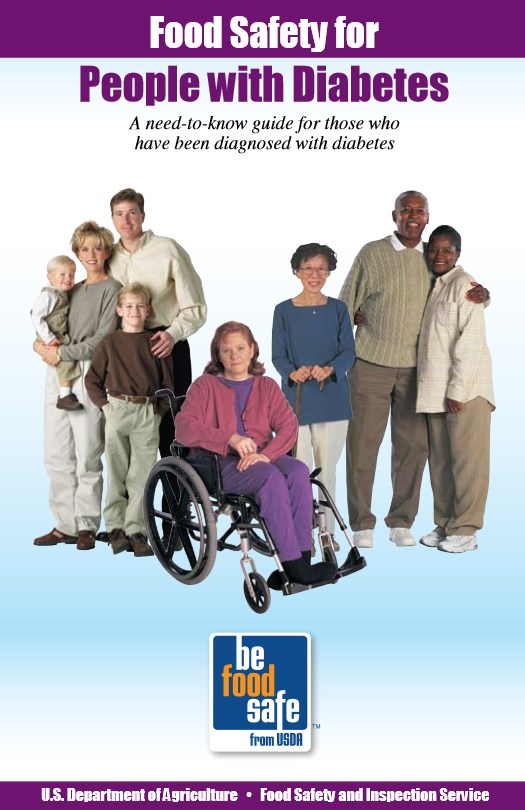


Other Diabetes Resources
- American Diabetes Association
- At A Glance: Diabetes[PDF – 225K]
- Diabetes Report Card
- Diabetes: What is it?[PDF – 253K]
- Diagnosed with Type 2 Diabetes, Now What?[PDF – 254K]
- National Diabetes Statistics Report
- Vital Signs Report: Native Americans with Diabetes
- National Institute of Diabetes and Digestive and Kidney Diseases Health Information Centers






